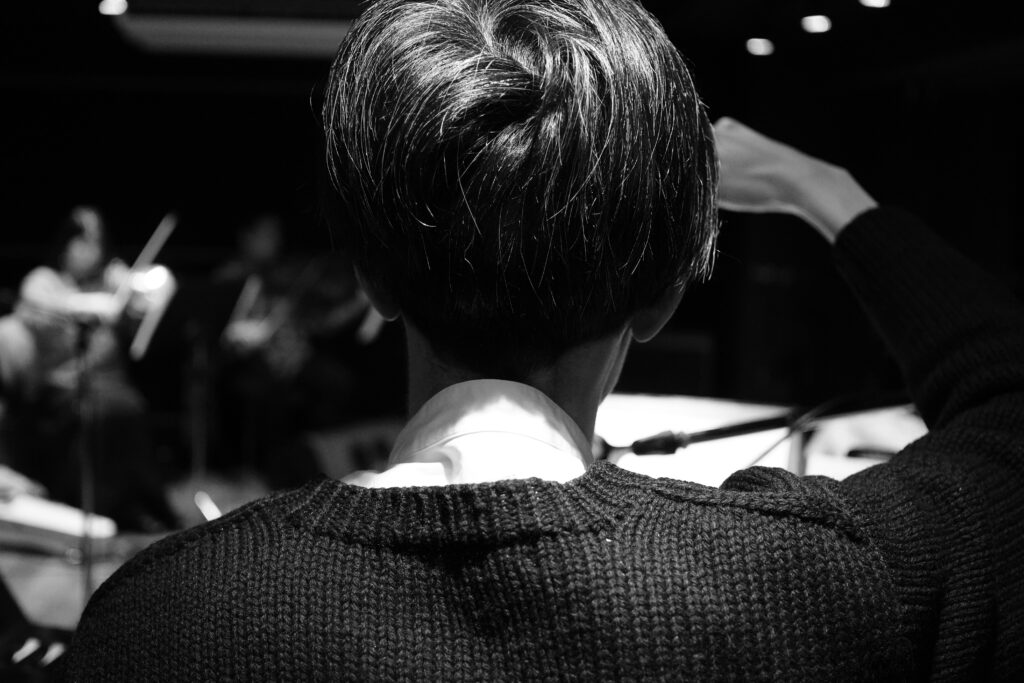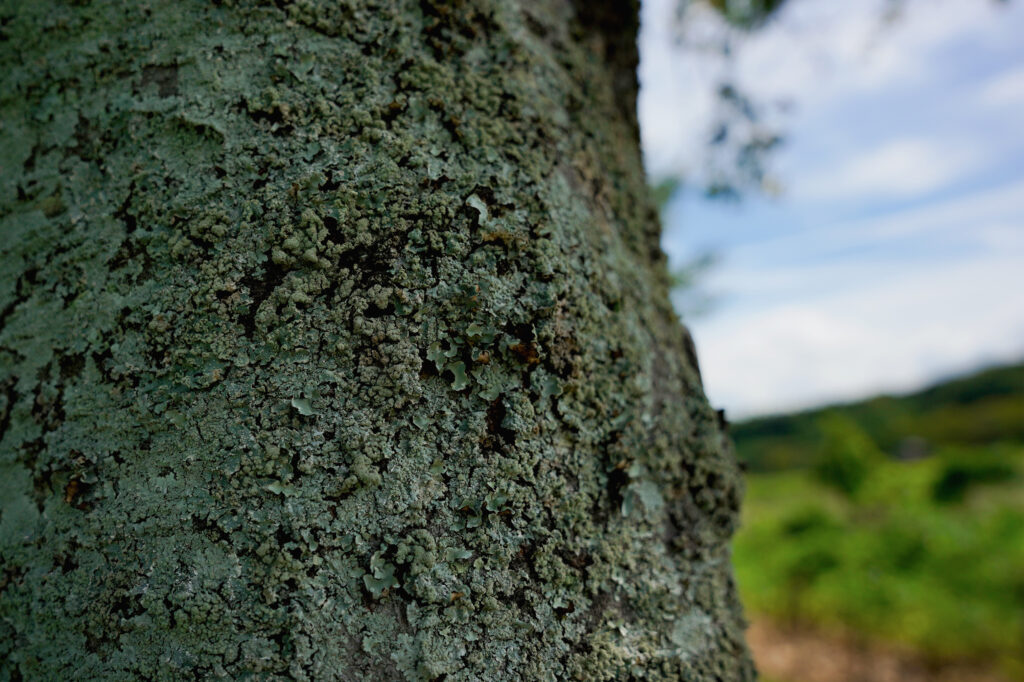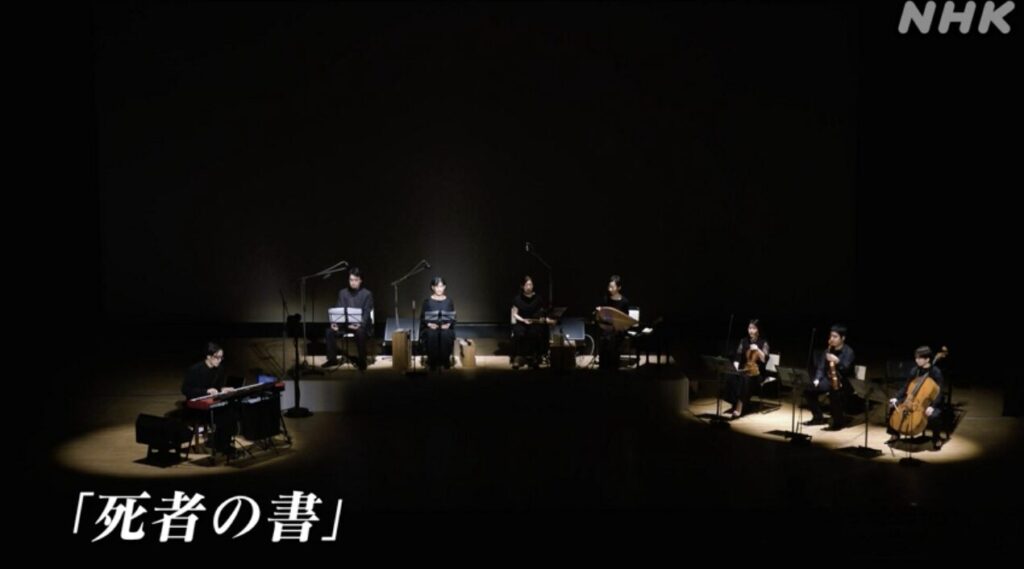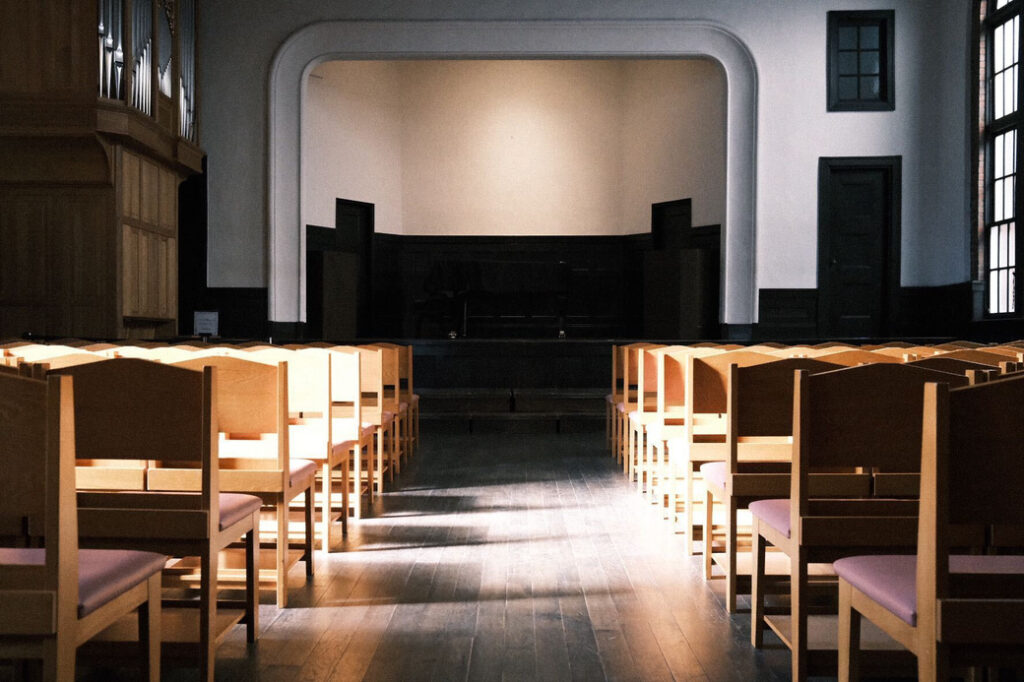
January 12, 2025 - Tochigi Performance @ Nasunogahara Harmony Hall
[Previous Reports on the Tochigi Performance: Gagaku Tales 16: Report ① | Gagaku Tales 17: Report ②]
◆Intermission
As the audience took a break, each person seemed to be quietly reflecting on the interplay of gagaku and classical music, the colors and resonances of Taro’s sound, and the emotions that had emerged within them.
The second half of the performance began, slowly and deliberately.
◆"Sadachō no Netori" & "Ryōō no Ha"

The second half commenced, with the audience still carrying the quiet intensity left by the first half.
Taro: “I am honored to be performing today with members of Reigakusha, one of Japan’s most esteemed gagaku ensembles. We will now play two pieces of classical gagaku music that have been performed unchanged since the Heian period: Sadachō no Netori and Ryōō no Ha.
I didn’t include the names of these pieces in the program notes on purpose—because the sheer weight of the kanji can be overwhelming.
People often ask me, ‘What’s so special about gagaku?’ I’ve thought about this question for a long time, and recently, I feel like I’ve found my answer.
When I listen to gagaku, I feel myself growing smaller and smaller.
And I think that’s a good thing.
Have you ever looked up at a vast, star-filled sky—countless stars sparkling across light-years of space—and suddenly felt like your worries didn’t matter so much? Personally, I believe gagaku is just like the stars or the ocean. The more you explore it, the more you realize how small you are, in the best possible way. It humbles you. It makes you think, ‘Wow, there is something this incredible in the world.’
As you listen to these next two pieces, I recommend not trying to analyze the melodies or search for their meanings. When you look at a starry sky, you don’t wonder what each star is trying to tell you, do you? Instead, you just take it in, reflecting on your own inner world.
I hope you will surrender yourself to the music and simply experience it.”
With that, the performance of Sadachō no Netori and Ryōō no Ha began.
The sounds emerged as naturally as a phenomenon of the universe—resonating, reverberating. The performers seemed to transform into trees, leaves, and flowers. Their sounds became the whispering of pines. In the hushed stillness, they no longer felt human. The music transcended dimensions, creating an overwhelming sense of scale. It was as if the audience was surrendering themselves to a vast landscape or natural event. And then came a realization— Ah, we have always been part of this world, haven’t we?
◆"The Book of the Dead"

Taro began to speak.
“Ten years ago, when I was living in Tokyo, I struggled with a severe mental illness. I was bedridden for nearly two years. My wife suffered even more than I did.”
While in Tokyo, Taro had collaborated with gakubiwa player Kahoru Nakamura on a piece titled Kotsuka. Two years later, he worked with hichiriki player Hitomi Nakamura and ryuteki player Yoshiyuki Izaki, and it was for that performance that he composed The Book of the Dead.
“When the concert ended, I felt like I had ended, too.”
He no longer knew if he was alive or dead. He thought, Maybe I should just quit music altogether.
Then, an unexpected message arrived. Natsumi Shinkawa, the owner of Café Shinkawaya in the town of Ashino, Nasumachi, reached out with an opportunity: an opening for a Chiiki Okozhi Kyoryokutai (regional revitalization team).
At the time, Taro’s son was only a year old. He thought, If I do this, maybe I won’t die. And so, he moved to Nasumachi.
Surrounded by the area’s rich nature and kind-hearted people, he gradually began to recover. Before long, the local government asked him to compose a commemorative piece for the renovation of the train station, and other music-related opportunities started to come his way.
It was the first sign of his rebirth—the path that would eventually lead to Shōgun.
Taro: “Shōgun received the most Emmy nominations in history, and its soundtrack was even nominated for a Golden Globe. I haven’t changed, but suddenly, everyone is praising me. And for the first time, I felt like I could acknowledge that maybe—just maybe—I hadn’t been wrong all along. I became a little stronger, a little more forgiving of myself.
I could finally look at the old score for The Book of the Dead again.
It was the same with the piece I wrote after the earthquake. Preparing for this concert gave me the chance to look back, and I realized—I wanted to bring these pieces back to life. So I reworked them, and here they are.”
The audience listened intently, absorbing not only the music but also the weight of Taro’s painful past and his journey of renewal.
The piano repeated its melody—tracing the contours of long-frozen sorrow. The hichiriki, ryuteki, and other ancient instruments layered their sounds, guiding the way.
There are many kinds of life and death. But in the end, they are all powerful forces, vast energies that propel us forward.
Strings joined in, trembling and intertwining. The overlapping dimensions of energy revealed life and death as part of a greater cycle. And then, the gakubiwa opened the next door—
At some point, The Book of the Dead had become personal to each listener.
The concert was now entering its final three pieces.
Please join us at the Tokyo performance (https://drftr.co.jp/20242025concert/)
We hope you enjoy Taro's music, ``Gagaku x Strings.''

Performers:
Taro Ishida: Piano, Synthesizer
Hitomi Nakamura: Hichiriki
Kahoru Nakamura: Gaku-biwa
Hanako Nakamura: Sho
Yoshiyuki Izaki: Ryuteki
Riri Tanaka: Violin
Tatsuya Nanasawa: Viola
Nanami Narita: Cello
Written by Atsuko Aoyagi / ao.Inc.
#dailythoughts #japanesetraditionalmusic #composition
#gagaku #composinggagaku #nonmusic #gagakuperformance
#filmmusic #cinematicmusic #spatialmusic #gagakustories #sidenotes
#layer #mysterious #shogun #taroishida